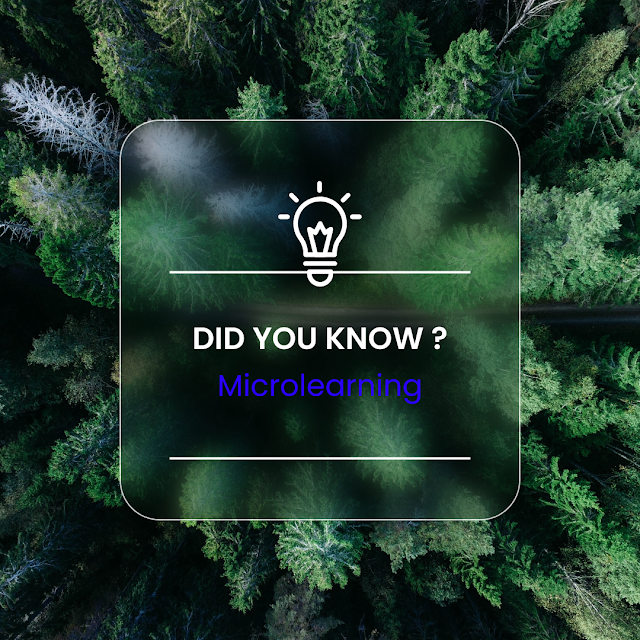The Benefits of Microlearning: How Bite-Sized Learning Can Improve Productivity and Retention
Microlearning is a modern approach to learning and
development that delivers bite-sized chunks of information through mobile
devices. It is designed to be quick, easy, and effective, making it perfect for
busy professionals and students who want to learn something new but don't have
a lot of time to spare. One of the key benefits of microlearning is that it can
improve productivity and retention. In this article, we will explore how
microlearning can achieve these benefits and how it can be implemented in
different settings.
What is Microlearning? Microlearning is a method of delivering small pieces of information to learners in short intervals. These small pieces of information can take the form of videos, podcasts, infographics, or interactive quizzes. The goal of microlearning is to help learners retain information better, as they are able to focus on a specific task or concept without getting overwhelmed. Microlearning is highly adaptable and can be used in a variety of settings, including the workplace, school, and personal development.
The Benefits of Microlearning.
2.1 Improve Productivity One of the key benefits of
microlearning is that it can improve productivity. By delivering information in
bite-sized chunks, learners are able to focus on specific skills or tasks,
rather than trying to learn everything at once. This can help learners retain
information better, as they are able to focus on a specific task or concept
without getting overwhelmed. Additionally, microlearning is highly adaptable and can be used in a variety of settings, including the workplace, school, and
personal development.
2.2 Improve retention Another advantage of microlearning is
that it can improve retention. With the widespread use of mobile devices,
learners can access microlearning content anytime, anywhere. This means that
learners can fit learning into their busy schedules, rather than having to set
aside a specific time for learning. Furthermore, microlearning can be tailored
to individual learners' needs, which means that learners can progress at their
own pace, rather than feeling pressured to keep up with a group or class.
How Microlearning Can be Implemented.
3.1 In the Workplace Microlearning can be used to train
employees on specific skills or tasks, such as using new software or equipment.
Microlearning can also be used to keep employees up-to-date on industry trends
or company policies, which can help to increase productivity and reduce the
risk of errors or accidents.
3.2 In Education In education, microlearning can be used to
supplement traditional classroom teaching. For example, students can use
microlearning to review key concepts or skills before a test, or to gain
additional knowledge on a topic they are studying. Microlearning can also be
used to support self-directed learning, which can help students take more
ownership of their learning and feel more motivated.
3.3 For Personal Development Microlearning can also be used
for personal development, such as learning a new language, skill or hobby. With
the wide range of microlearning content available, learners can pick and choose
the topics that interest them, which can help to make the learning experience
more enjoyable and satisfying.
In conclusion, microlearning is a modern and effective
approach to learning and development that delivers bite-sized chunks of
information through mobile devices. It offers a number of benefits, including
allowing learners to focus on specific skills or topics, being highly adaptable
and accessible, and engaging learners in different ways. Whether it is used in
the workplace, school, or personal development, microlearning is an efficient
and effective way to learn. Microlearning can help improve productivity and
retention by providing learners with focused, bite-




Comments
Post a Comment